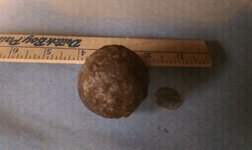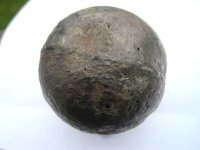donkarlos
Hero Member
- Sep 15, 2012
- 658
- 309
- Detector(s) used
- Sov gt, Ctx
Ok, so I know the yardstick and penny pictured with it aren't exact measurements, but they give the initial idea here..
This was found in the wet sand at low tide on a rocky New England beach. The area isn't deep water..just deep enough to let a few clam boats pull up and load up a vehicle on the boat ramp made of crushed stone. Area goes back to the 1600's and earlier I suppose.

This was found in the wet sand at low tide on a rocky New England beach. The area isn't deep water..just deep enough to let a few clam boats pull up and load up a vehicle on the boat ramp made of crushed stone. Area goes back to the 1600's and earlier I suppose.




